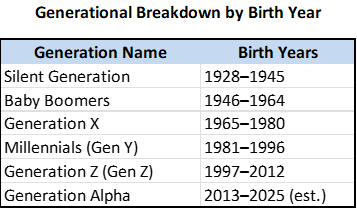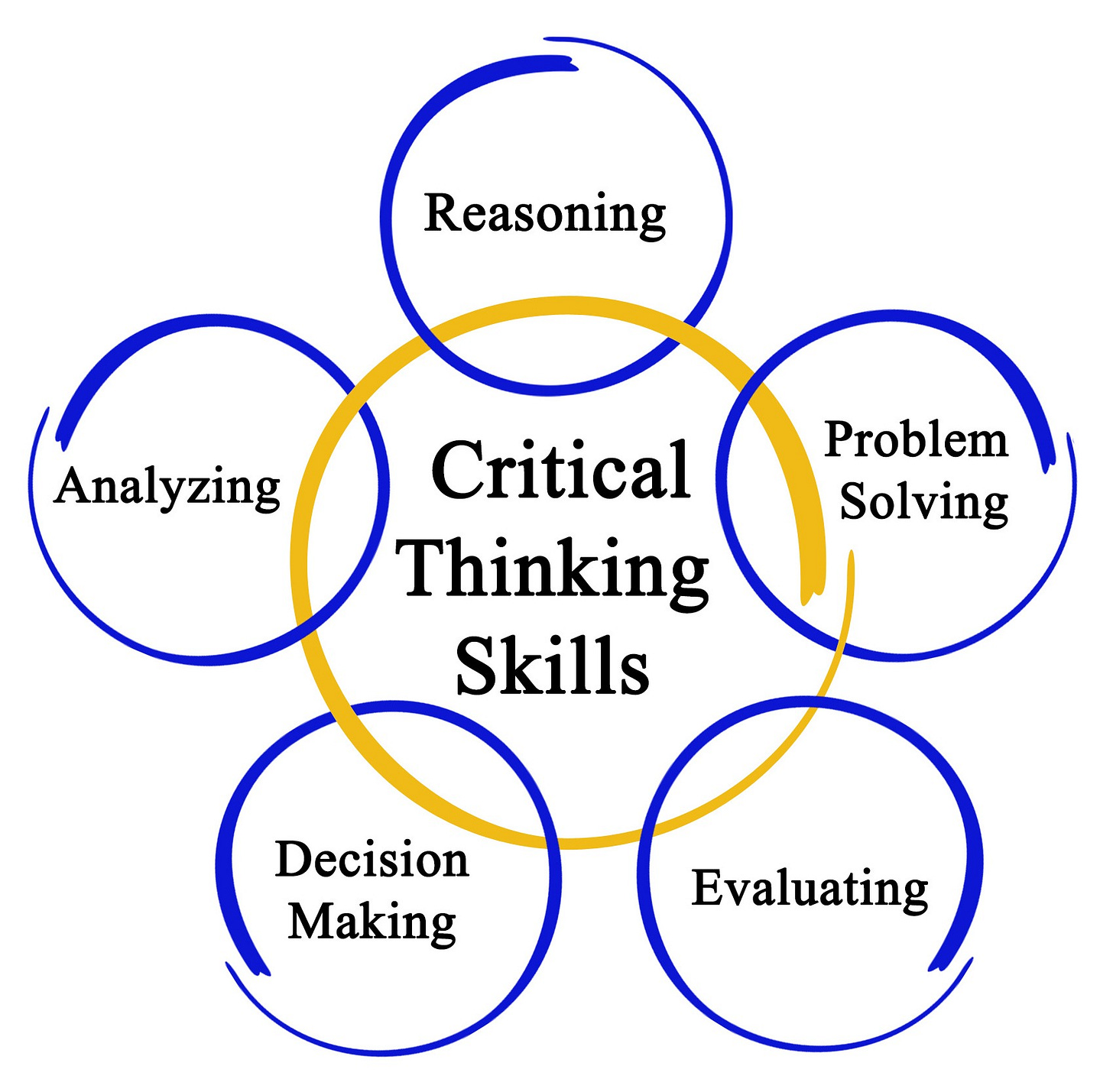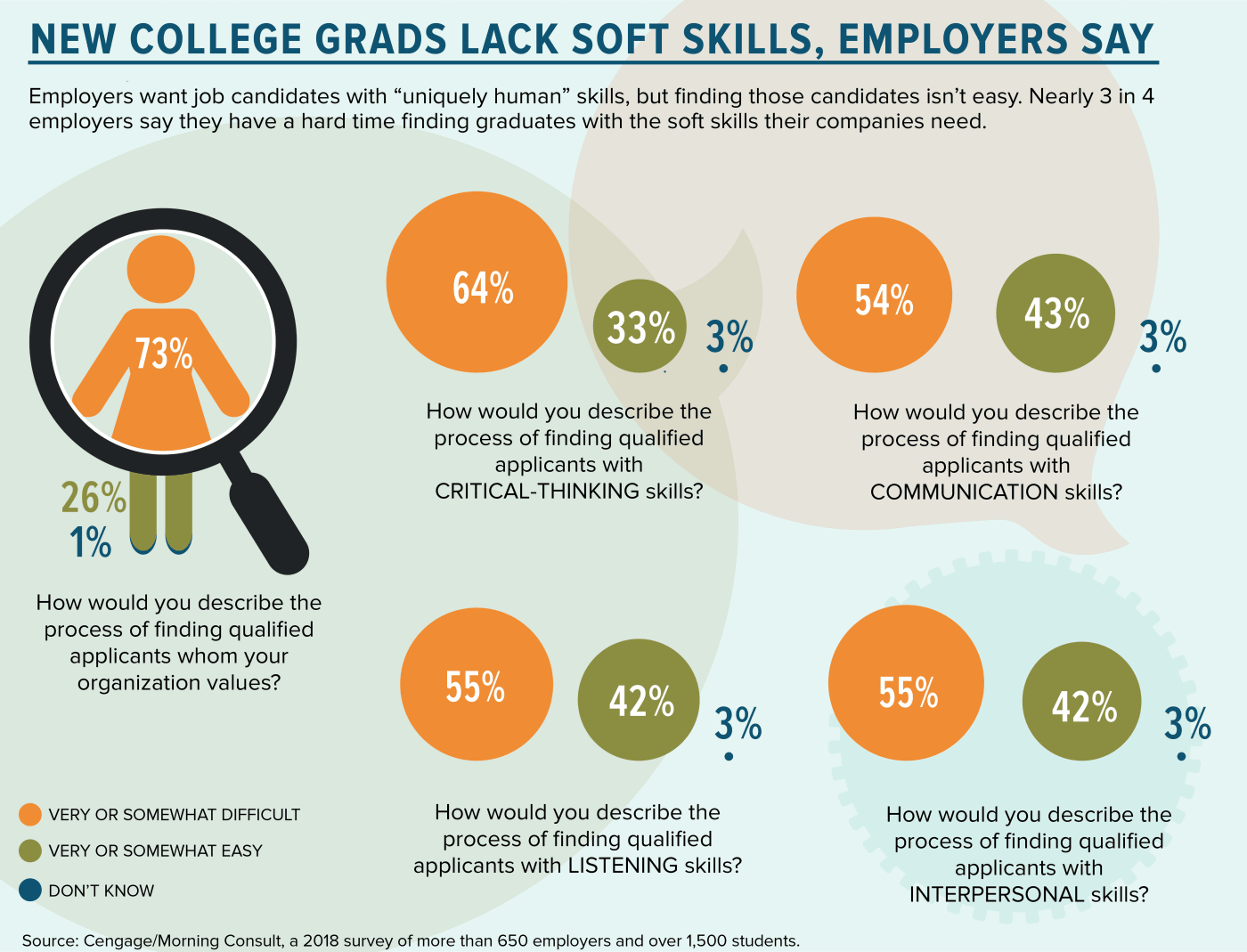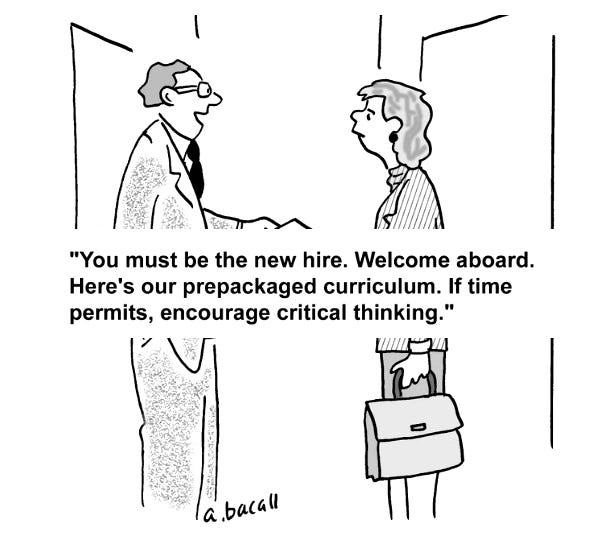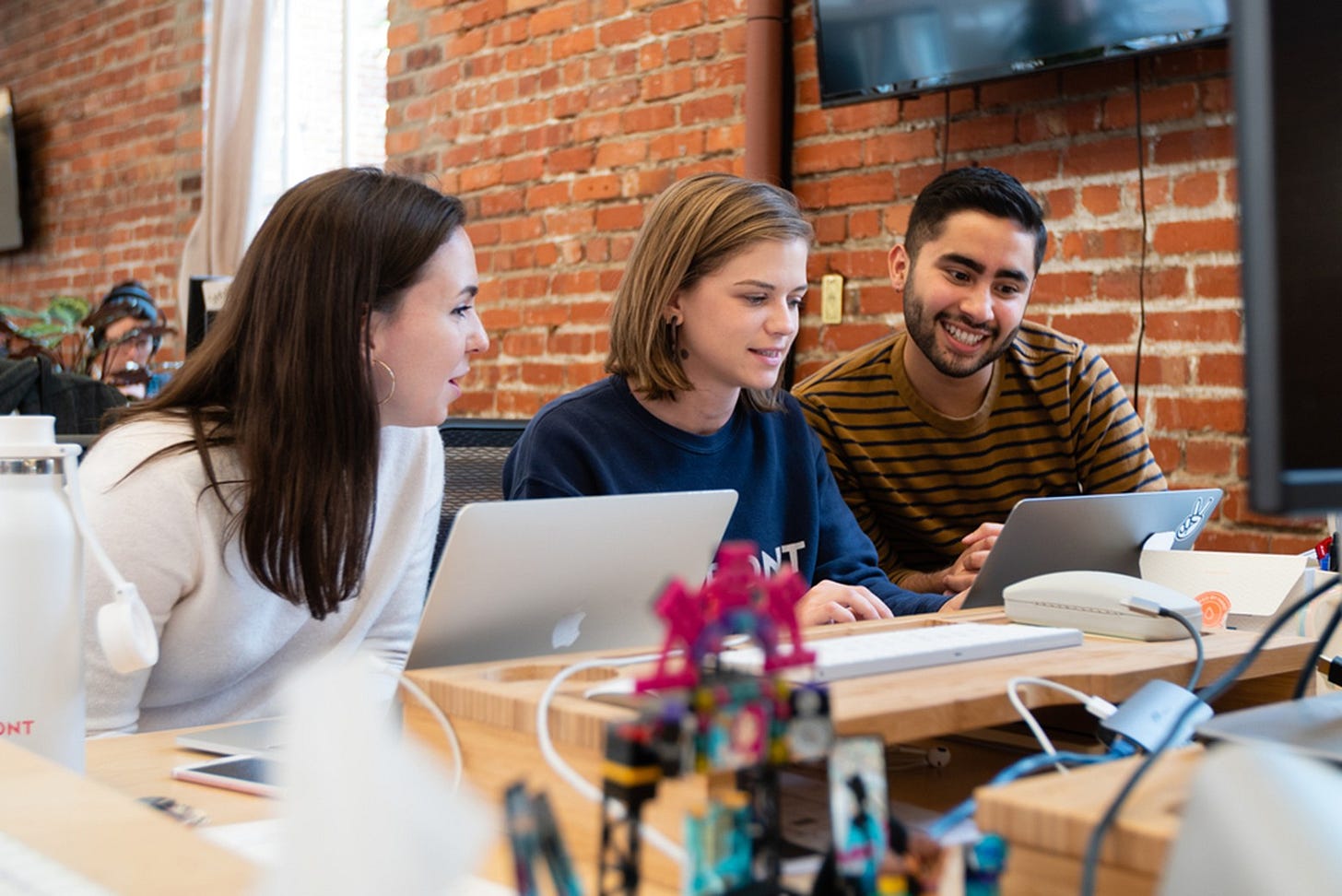Critical Thinking by Generation: How Gen Z Stacks Up—and Why It Matters
(5 Min Read)
Let’s face it: things aren’t getting any simpler. When I first stepped into the world of consulting at Accenture, there was no magic database of answers to my surprise. I couldn’t just plug a question into a search bar and be handed a tidy solution. I had to research, learn to ask better questions, synthesize messy inputs, and think—really think. That’s where critical thinking lived. At the time, I didn’t realize just how important the skill was in helping businesses thrive.
Fast forward to today, AI can generate a strategy document in 30 seconds, and our feeds are overflowing with hot takes and headlines. Between nonstop news, algorithm-driven content, and chatbots ready to do your homework, it's never been easier to get information or harder to think deeply about it. That’s where critical thinking comes in.
It’s not just a buzzword. Critical thinking is the ability to analyze, question, evaluate, and reason your way through information, especially when things get messy. It’s the difference between reacting and responding, between jumping to conclusions and digging for understanding. And in a world that’s increasingly noisy and complex, critical thinking is the superpower Gen Z needs most, and where business leaders can help develop this generation.
This issue explores how Gen Z is developing critical thinking in a world of instant access and digital overload and how their upbringing in the tech era is both a challenge and an asset. Whether you're leading, teaching, or growing up Gen Z, you'll find practical, no-fluff strategies to help this generation not only sharpen their thinking but also lead with it.
Comparing Gen Z and Previous Generations in Critical Thinking
Before diving into how Gen Z compares with previous generations, it helps to understand who’s who across the generational timeline. Here’s a quick breakdown to frame the conversation:
How is Generation Z performing in comparison to older generations regarding critical thinking skills? The results are varied. On one hand, they excel at navigating the digital landscape. On the other hand, they occasionally struggle when the answer isn’t readily available through a quick internet search.
Employers often say Gen Z lacks strong problem-solving and reasoning skills, especially compared to Millennials and Gen Xers. Some even admit to avoiding Gen Z hires altogether (yikes). But let’s not forget: every generation gets this kind of critique when they're new to the workforce.
Back when Gen X came onto the scene (my generation), we were called “media junkies with no attention span.” Sound familiar? With cable TV, video games, and MTV as our backdrop, older generations were convinced our brains were being fried by flashing screens and loud music. Turns out, what looked like a distraction was actually the beginning of a new kind of media fluency, just as we're now seeing with Gen Z.
Still, there’s some data to back it up. Standardized assessments show that Gen Z scores slightly lower on tasks that require deep analysis or dealing with conflicting information. Only 29% of managers think Gen Z can handle complex problems on their own, compared to nearly 50% for Millennials and over 60% for Gen X. But here’s where it gets interesting—when it comes to digital savvy and spotting fake news online, Gen Z is ahead of the pack.
So what does this tell us? Gen Z might struggle with traditional critical thinking at times, but they’re not clueless. They’re just wired differently, more visual, more collaborative, and faster at scanning and filtering. What they need is a chance to slow down, think deeper, and apply their strengths to complex, real-world problems.
Key Factors Influencing Gen Z’s Critical Thinking Development
Pervasive Technology & Instant Answers
Gen Z grew up with answers at their fingertips—literally. When you’ve had a smartphone since middle school (or perhaps earlier), why wouldn’t one Google everything? I know I routinely use my phone to provide answers, especially when it comes to “Now, who is that actor in that movie?”. While this makes them excellent information retrievers, it doesn’t always help them develop the mental endurance to wrestle with tough questions.
The problem is, instant answers often shortcut the brain’s deeper work. Instead of thinking things through, it’s tempting to just grab a quick explanation and move on. To provide an example, and this is not limited to Gen Z: For years, people have repeated the story that Albert Einstein failed math as a student, using it as “proof” that even geniuses struggle in school. I mean really?
It’s been quoted in speeches, social media posts, and even motivational books. But here’s the truth: Einstein never failed math. In fact, he was exceptionally good at it, mastering calculus by the age of 15. If one just thinks, critically, they know not all information passes the “sniff test”.
And all the digital multitasking? It trains the brain to scan, not reflect. So, while Gen Z is great at filtering through loads of information fast, they sometimes miss the slow-burn thinking that builds insight.
I’m not saying ditch the technology—far from it. But helping Gen Z build some “cognitive stamina” is key. That means providing more opportunities for them to wrestle with ambiguity, break down complex problems, and sit with something long enough to figure it out.
The Role of AI in Shaping Thinking Habits
I’m sure we all recognize that AI is both a gift and a trap. Sure, it can help you brainstorm ideas, outline an essay, and even clean up writing. But if you’re not careful, it can do too much of the thinking for you.
Gen Z is already using AI tools like ChatGPT and Grammarly to get things done faster, and who can blame them? As an example, I routinely use Grammarly to help clean up emails to clients. The challenge is making sure these tools supplement rather than replace thinking. When AI is used thoughtfully, it can actually sharpen critical thinking by providing feedback and helping explore alternative viewpoints. But if it becomes a crutch? That’s where skills start to atrophy.
Bottom line: AI isn’t the enemy of critical thinking, but mindless use of it might be. The trick is to treat it like a thinking partner, not a substitute.
Social Media and Information Quality
Social media is Gen Z’s second language. It’s where they get news, learn about the world, and have conversations about everything from climate change to fashion trends. But here’s the catch: most of it comes in tiny, bite-sized, often biased chunks.
TikTok, Instagram, and X (formerly Twitter) thrive on quick takes and emotional hooks. That doesn’t leave much room for nuance. And when the most-liked post wins, not the most accurate, it’s easy for misinformation to slip through. Gen Z is good at sniffing out some of this, but even they struggle to dig deeper.
The upside? This generation is incredibly curious and socially aware. They care about issues, want to make a difference, and are hungry to learn. The key is channeling that curiosity into habits of reflection, questioning, and source-checking. Because once they learn how to spot bias, verify claims, and ask smarter questions, they’re unstoppable.
Education System and Teaching Methods
Let’s be honest, school hasn’t always done Gen Z any favors when it comes to thinking critically. For years, education has focused on test scores and right answers, not exploration and open-ended thinking. Combine that with a pandemic that shut down classrooms and moved everything online, and it’s no wonder many students came out less confident in their reasoning skills.
There’s also a growing concern around declining reading comprehension, something essential to critical thinking. Recent studies suggest that Gen Z, while more digitally literate, is struggling with the kind of deep reading that builds analytical reasoning.
Skimming articles, scrolling through headlines, and favoring videos over text all contribute to the erosion of comprehension. And without strong reading skills, it becomes harder to evaluate arguments, interpret nuance, or build layered insight.
And now? Add AI to the mix. Students can plug a question into a chatbot and get an essay back in seconds. Tempting? Totally. But it can short-circuit the thinking process if schools aren’t careful.
The good news? Some educators are fighting back with active learning, debates, case studies, group projects, and problem-based learning. These approaches push students to engage, question, and connect ideas instead of memorizing them.
Want a real-world example of critical thinking in action? Look at West Point (yes, it’s my alma mater). Cadets there sharpen their reasoning not just in classrooms, but through leadership simulations, math boards, military strategy, field training, and the famous Thayer Method, which emphasizes pre-class preparation and in-class problem-solving.
They’re constantly asked to reflect, adapt, and apply knowledge under pressure. Critical thinking isn't just taught—it's lived. There’s something powerful about that hands-on, integrated model that more civilian education systems could borrow from.
Workplace Environment and Early Career Experiences
Gen Z didn’t just enter the workforce, they did it during a global pandemic. Many started their first jobs on Zoom, never met their manager in person, and learned company culture through Slack threads.
That matters. When you're remote, you miss out on the small stuff—overhearing how decisions get made, watching coworkers solve problems, asking quick questions after meetings. All of that is gold for developing workplace smarts and critical thinking.
Now that some companies are nudging people back into offices, there’s a chance to rebuild that learning environment. Hybrid work, if done right, can give Gen Z the best of both worlds—freedom plus mentorship. But leaders need to be intentional about creating space for reflection, feedback, and collaboration. That’s where growth happens.
Consulting firms, long known for their high standards and fast-paced environments, are navigating a generational shift with Gen Z. While they admire Gen Z's technology skills and curiosity, many also report a growing need to reinforce foundational skills like structured problem-solving, resilience, and critical thinking, especially in a world that offers quick answers but few frameworks.
A 2023 McKinsey report noted that while Gen Z candidates bring digital agility, nearly 60% of consulting managers cite “strategic thinking under pressure” as a skill gap needing targeted development.
Strengths and Weaknesses of Gen Z’s Critical Thinking
Let’s break it down. Gen Z comes to the table with some real assets, and a few blind spots, when it comes to thinking critically. Knowing what they do well (and where they could use a boost) is the first step in helping them thrive.
What They’re Great At
Emotional Intelligence: Gen Z gets people. They’re in tune with emotions, care about mental health, and value empathy. That’s a huge plus in any group or team environment.
Digital Savvy: They’ve got serious Google skills. Whether it’s finding obscure research or figuring out how to change a bike tire via YouTube, Gen Z knows how to hunt down answers fast.
Questioning the Status Quo: This is a generation that asks “why?, a lot. This is a good thing as long as it’s applied in the right context. Challenging norms is a critical thinking skill, not a personality flaw.
Desire to Learn: Surveys show, and this has been my personal experience, Gen Z is eager to grow. They want feedback, development, and purpose, not just a paycheck. That’s fertile ground for learning how to think better.
Where They Struggle and Need Help
Attention and Focus: Growing up on fast content and multitasking hasn’t exactly trained Gen Z to sit still with a hard problem. Building mental stamina is a must.
Over-Reliance on Tech: From calculators to ChatGPT, Gen Z is used to outsourcing thinking to tools. The key is learning when to lean in and when to unplug.
Depth Over Breadth: They can find 10 articles on a topic in seconds, but making sense of it all? Synthesizing, evaluating, and applying ideas? That’s still a work in progress.
Real-World Practice: Many haven’t had a lot of chances to use critical thinking outside school. They need real projects, real stakes, and real decisions to build those muscles. As business leaders, this is where you can help with full-time, as well as, intern associates.
Strategies to Strengthen Critical Thinking Skills
Now for the good stuff, what can you actually do about it? Whether you’re an employer, educator, or Gen Z yourself, here are practical moves to help strengthen critical thinking from every angle.
For Employers
Make Questioning Normal: Create a culture where people are encouraged to ask, "Why are we doing it this way?" It’s how innovation happens, and how critical thinkers are made.
Simulate Real Challenges: Give younger employees real-world problems to solve (not just busywork). Make space for trial, error, and iteration.
Pair Them Up: Match Gen Z with experienced mentors who can model how they think through complex decisions. Bonus points if it’s a two-way street (e.g. reverse mentoring).
Give Autonomy (with Guardrails): Let them take the lead on something. Then step back, but not too far. Think of it as bumpers on a bowling lane.
For Educators
Ditch the Memorization: Push for more debates, essays, and open-ended projects. Get them exploring ideas, not regurgitating facts.
Build Digital Literacy: Help students learn to vet sources, question what they see online, and build arguments backed by real evidence.
Celebrate Process, Not Just Results: Reward students for how they got to an answer, not just whether they nailed it. It teaches resilience and reflection. An example, is having students talk through their solution in front of the class/on a board.
Leverage AI Thoughtfully: Don’t ban AI (it’s here to stay), but teach students how to use it as a tool for brainstorming, comparing ideas, or challenging assumptions.
For Gen Z Themselves
Pause Before You Google: Try to work out an answer first. Train your brain to think before you click.
Ask Better Questions: Don’t settle for surface-level stuff. Dig deeper. Ask “Why?” and then ask “Why?” again.
Challenge Your Own Views: Follow people who think differently. Engage (respectfully) with opposing perspectives, and, as hard as it may be, put emotions aside and let facts take the lead.
Reflect on Your Thinking: After you make a decision or solve a problem, pause. What worked? What didn’t? What would you do differently next time.
Conclusion
Here’s the big idea: Gen Z isn’t bad at critical thinking, they’re just growing up in a world that makes it harder to practice. But with the right support, the right challenges, and the right mindset, they can absolutely become the clearest thinkers, boldest leaders, and most adaptive problem-solvers in the room.
So whether you're coaching, hiring, teaching, or are Gen Z, remember: critical thinking isn’t something you’re born with. It’s something you build. And there’s never been a better time to start. Good Luck!
Sources
Insights and data in this newsletter are drawn from publications and research, including:
Cangrade Soft Skills Research (2024)
YouGov & National Association of Colleges and Employers (NACE) Survey (2023)
McKinsey & Company, Gen Z Behavior Analysis (2023)
Education Design Lab Report on Employer Perspectives (2022)
Pew Research Center, Generational Comparison Studies (2020–2024)
Israeli Cross-Generational Digital Critical Thinking Study (2024)
American Association of Colleges & Universities (AAC&U), Liberal Education Trends (2023)
The Chronicle of Higher Education, Pandemic Learning Impact Reports (2022–2023)
Stanford History Education Group, Media Literacy Evaluation Studies (2021)
Harvard Business Review, Workplace Trends Reports (2023–2024)
LinkedIn Learning Skills Insights (2023)—they’re just growing up in a world that makes it harder to practice. But with the right support, the right challenges, and the right mindset, they can absolutely become the clearest thinkers, boldest leaders, and most adaptive problem-solvers in the room.



